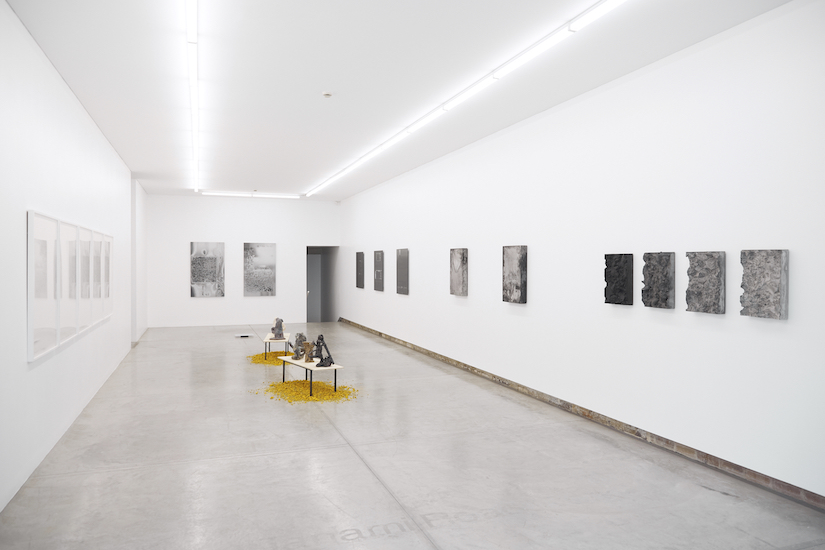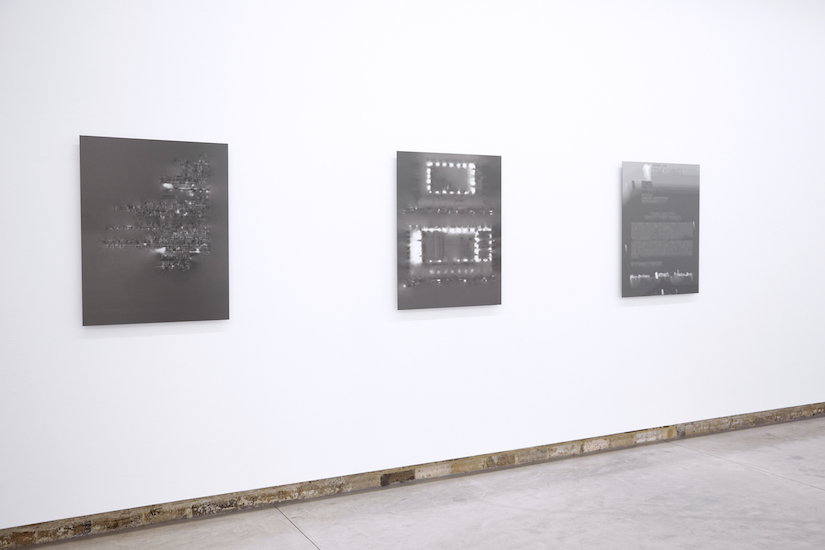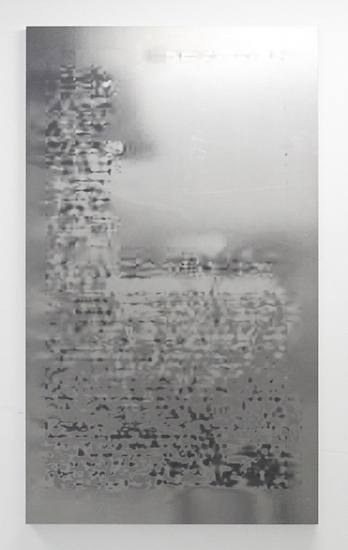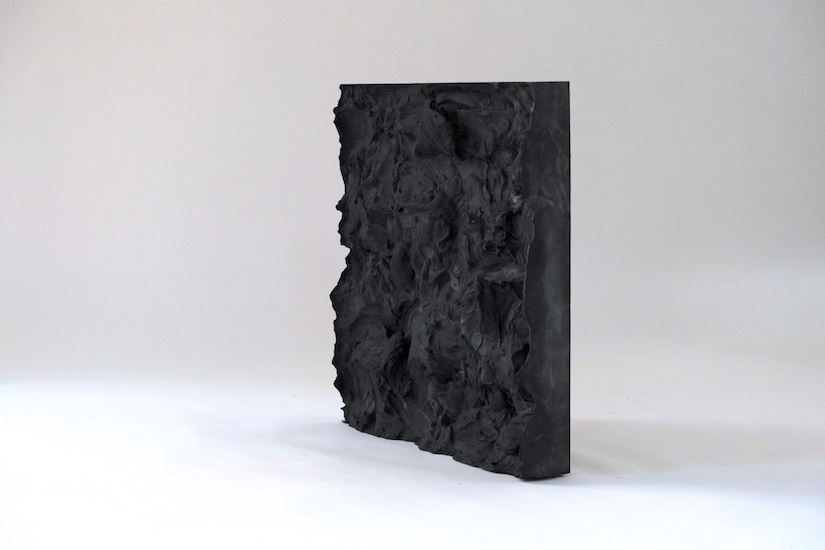Yavuz Gallery Sydney is delighted to present Emerging Topographies, a group exhibition featuring four young Australian artists – Orson Heidrich, Nabilah Nordin, Stanislava Pinchuk and Kien Situ.
Emerging Topographies acts as a broad mapping of the emerging arts sector within Australia. By taking the practices of four artists as key data points, the exhibition offers an introduction to a new generation of artists that are pushing the boundaries of their medium and experimenting with new territories. Emerging Topographies focuses specifically on artists whose practice references topography – either through an exploration of form and surface or through a direct investigation of mapping of territory, land and data.
ABOUT THE ARTISTS AND THEIR WORKS
Orson Heidrich (b. 1996, Australia) is a mixed media artist whose practice spans across photography, video, sculpture and installation. Trained as a photographer, Heidrich uses the image, photographic and videographic, as a starting point. The imagery is then reinterpreted via the application of industrial printing techniques onto diverse industrial materials such as steel, aluminium, copper, glass and mirror. The changing mediums alter the final reception and impression of the same source imagery material. Sitting at the juncture between sculpture and print, Heidrich’s works are hybrid objects.
For Emerging Topographies, Heidrich presents the Multispec series – a body of work that is both tangible and immaterial as it comprises UV pigment prints on aluminium plates, UV pigment prints onto mirrors and augmented reality 3D models. In the Multispec series, the source imagery Heidrich uses is derived from monochromatic information fields generated from 2–15kb sized thumbnails of misinterpreted, interpolated PDFs found through Google Images. Once detected by Google, these digital anomalies are periodically removed and wiped from the internet where they were once generated. Playing with pure data, the Multispec series is an aesthetic interpretation of an accidental internet by-product. Through the collection of the abstract data-debris and anomalies, the Multispec series can be read as a topography of an online space that is unseen by most.
Nabilah Nordin (b. 1991, Singapore) is a sculptor known for her amorphous, globby creations. Prolific in her production, her visual language bleeds into every aspect of her life. Nordin’s anarchic sculptures and installations incorporate found objects and materials, giving her works a strangely uncanny sense of the familiar – forms that are simultaneously alien and human.
In the exhibition, Nordin’s installation consists of a series of wonky constructions: haphazard combinations of discarded (and reused) wood, pulp, wire, cement, sand, wax and alginate dust, among other things. This cacophony of natural and artificial materials are stuck, glued or brutishly screwed together. The sculptures, each with their own distinct personality, are composed from multiple layers slathered on top of each other, building form, texture and colour. Imitating the more traditional sculptural form of ceramic or pottery, the assemblages are finally coated in layers of gloss or matte resin. This conservation process prevents decomposition and mirrors other preservation methods – such as mummification. In their embalmed forms, these sculptures seem wrenched from the earth’s crust, clumps of land or volcanic rock frozen in time and space by Nordin’s treatment.
The six works sit perched atop a jaunty splattering of cardboard pieces. The cardboard has been soaked, torn up, mushed and reprocessed into organic forms before being sprayed with yellow line marking spray paint. This paint is often used during construction work to demarcate space and define boundaries – here, Nordin asserts her own territory within the context of this group exhibition.
Stanislava Pinchuk (b. 1988, Ukrainian SSR) is multidisciplinary artist exploring the boundaries of drawing, installation, tattooing, film and sculpture. Pinchuk surveys the ways in which landscape holds memory and testament of political events and violations of human rights. Using source materials of data, documentation, and detritus surveyed through field-work, Pinchuk’s critical practice reconsiders perceptions of geopolitical borders, migration, climate catastrophe and nuclear crises.
Pinchuk presents a five-panel work consisting of pinhole drawings titled Data Study (Annual Mean Temperature Anomaly: Australia). This paper-based polyptych is a study of one of Pinchuk’s yet to be announced projects; a public art commission taking the form of a climate data mural and a nightly animation that would be directly connected to the Bureau Of Meteorology data and change daily accordingly. In this delicate five-panel work, Pinchuk has translated, pinhole by pinhole, thousands of data points describing the changing patterns of Australian temperature. A meticulous, physically demanding and time-consuming creative process that highly resembles her home-made tattooing practice. Data Study (Annual Mean Temperature Anomaly: Australia) is a poetic transcription of scientific figures into an ocean of undulating waves.
Kien Situ 司徒建 (b. 1990, Australia) works across sculpture and installation to explore the ideas of memory, cultural amnesia and identity in relation to constructed objects and built environments. Drawing upon both his diasporic Chinese-Vietnamese upbringing and his Eurocentric architectural education, Situ creates objects which reinterpret his formative hybrid aesthetics. The incorporation of ink is foundational to Situ’s practice as part of his broader investigation into the interrelationships between geography and identity. The material associations of region-specific ink and colour provide deeply embedded connotations to time and place.
For Emerging Topographies, Situ has created a suite of new sculptures whose auspicious dimensions are directly informed by the tradition of Chinese numerology. The dark forms take their colour from the alchemical mixing of industrial gypsum cement with Chinese Mò ink. Through a manual and labour- intensive casting process, Situ physically manipulates the cement mixture as it solidifies to create movement and form. The stormy gradients, now frozen in time, become evocative of layers of geological stratum, or a distant birds eye view of landscape. These new works take visual cues from the natural world; the Shansui (Strata) series imitates a cross-section view of the earth’s crust, whereas the organic textures of the Shansui (Surface) series could easily be mistaken for volcanic rock. Situ’s abstracted forms are loaded with a psychological and formal resonance that links to the topographies of land, place and geography.







